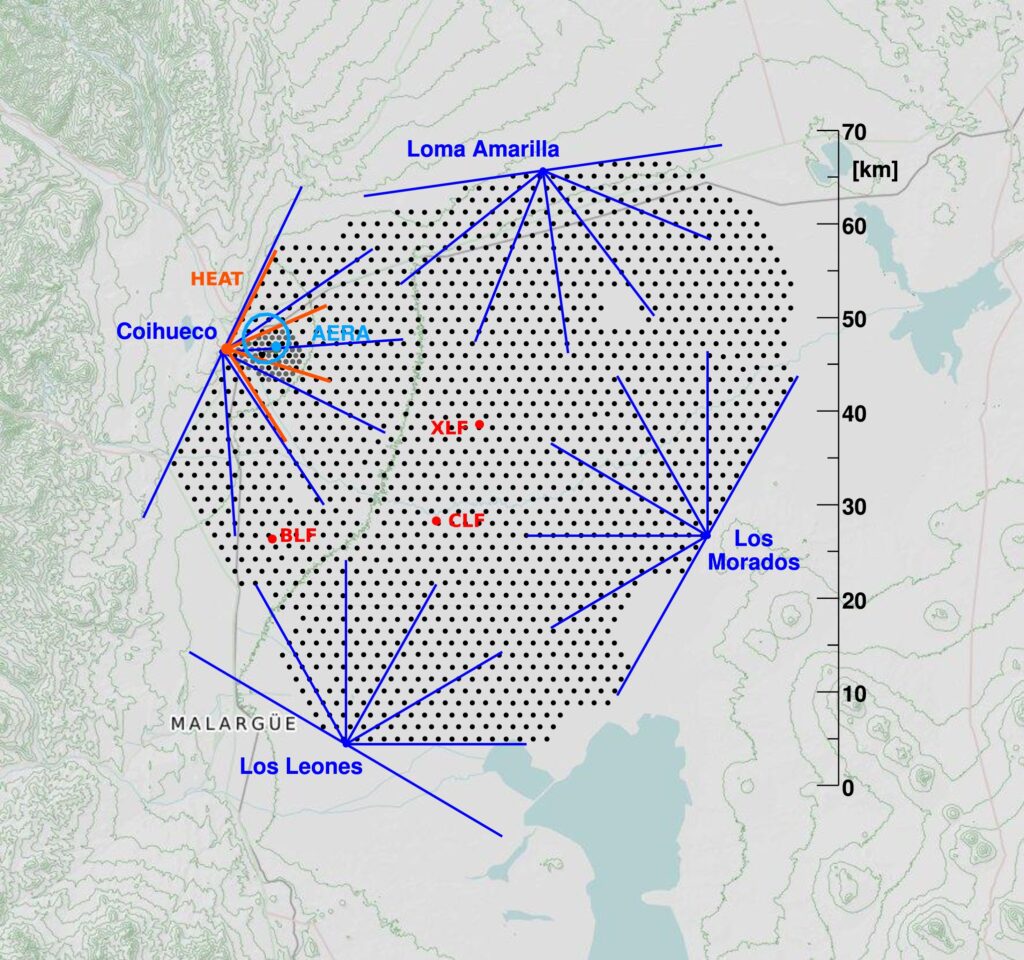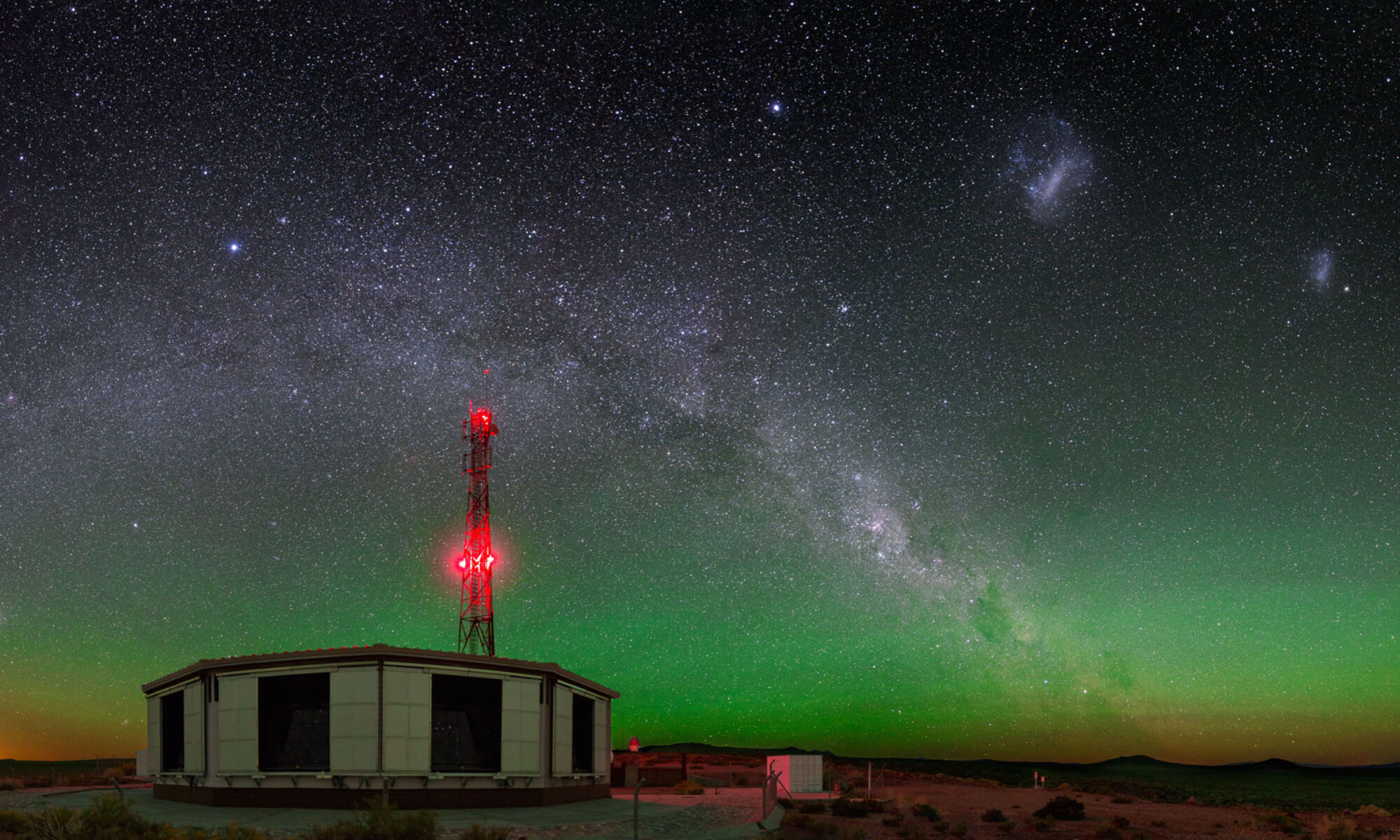The Pierre Auger Observatory, located in the Pampa Argentina, is the world’s largest Cosmic Ray detector. More than 1600 water-Cherenkov stations constitute the Surface Detector, distributed over 3000 km2. This area is overlooked by the Fluorescence Detector, a set of 27 telescopes grouped in four sites at the borders of the array.


Auger combines the technique of sampling the shower particles reaching the Earth surface with the technique of detecting the fluorescence light produced by the excitation of Nitrogen molecules by the low energy electrons of the shower. About 10% of the collected events will have simultaneously information from the ground array and the fluorescence detectors.
The main configuration allows for a 100% efficiency detection of cosmic rays above 1 EeV. The flux for lower energy cosmic ray is much higher, and the observatory can be smaller. To efficiently detect events down to 0.3 EeV, a smaller number of ground stations is added (750 m apart from each other, instead of the usual 1500 m in an area of few hundred km²), as well as additional telescopes looking upward (from 30 to 60 degrees, instead of 2 to 32 degrees, in elevation).
This is thus a crowded area of the Pierre Auger Observatory, which is also used for R&D. In particular, the Observatory is testing new radio detection of extensive air showers, underground muon detectors and new mixed technologies for muon identification (in the MARTA project).
All ground stations of the observatory are now being upgraded, with new electronics and an extra scintillator detector on top of the water tanks, also to help the distinction between the total signal and that created by muons in the Cherenkov detectors.
You can find a 3D-interactive display of the Pierre Auger Observatory here.
